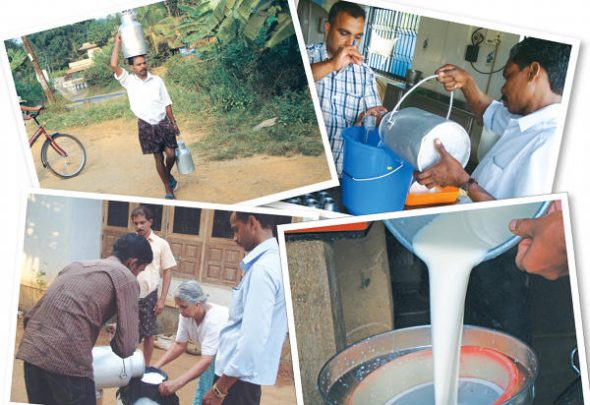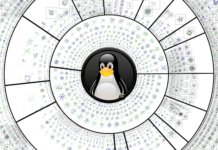
While people are still contemplating whether to use open source in their mission-critical operations, the Kerala Dairy Cooperative Societies (DCS) has set an example by using open source in its day-to-day activities, to cut costs.
In cooperative societies, a group of dairy farmers come together and are assisted by the government to set up a society. Each district has an average of 100 societies, which could each comprise 200 to 2,000 dairy farmers. The farmers bring their produce to the societies, where it is measured in terms of quantity and quality, and this data is recorded on a daily basis.
Earlier, their process involved manually entering data into registers, ledgers, schedules and forms. This caused a lot of difficulty in verifying and tracking the status of each activity, and settling accounts with dairy farmers and customers.
The initial exercise, prior to adopting open source, included discussions with the dairy societies to identify their complete requirements and problems. Their main need was automation of office procedures like data entry and the generation of reports.
A computerised information system was developed with the help of National Informatics Centre (NIC) in 2001. Called Lypsaa, it was developed on a Microsoft platform and used Visual Basic for development, Crystal Reports to generate reports, and the Windows 98 operating system.
“Though this introduced transparency into the system, proprietary solutions meant a high cost in the form of licence fees for at least 70 systems and servers,” shares Khalid C, solutions architect of Lypsaa and a freelance consultant. Moreover, Microsoft stopped supporting some of the software after they launched newer versions of the Windows OS, and there were issues with compatibility.
A software development committee created jointly by DCS and NIC was against the hidden costs of proprietary software. They evaluated Lypsaa and submitted a proposal to migrate it to an open source solution named OpenLypsaa. The committee started its efforts to develop free software using hired resources in 2007.
Open source for cost-cutting
The most prominent benefit to the societies is related to cost. “As a result of using free and open source software at every possible step, the Kerala DCSs collectively saved about Rs 25 lakh,” states Simon E K, District Informatics Officer, NIC.
“If we went ahead with Windows-based PCs and proprietary databases, it would have cost about Rs 5,000 per society. We are assured that our total investment of Rs 5-6 lakhs was a good one. We also have a hold on the total cost of ownership including development, installing and using software for the duration of its life,” he adds.
The DCSs did not have to make additional investments for new computer systems as they could use their regular systems with Intel architecture, 512 MB or higher RAM, and 80 GB hard disk drives.
Ease of maintenance is another advantage that Jose Emmanuel, deputy director, Dairy Development, Government of Kerala, noted. He states, “With Microsoft, we would often get calls from the societies due to viruses on their machines — at least one call per month. Our experience with open source proves that it is much more secure, as we receive no complaints about viruses, reformatting and system crashes.”
Going the open source way
To begin with, Ubuntu was introduced on all the DCS systems. OpenLypsaa was developed and implemented at 30 societies by 2008. It is a complete software solution developed using the LAMP platform. OpenLypsaa is used in functions like generating milk-bills for farmers and taking care of their daily accounting. It is used to register members, keep milk procurement details, manage financial accounting, prepare milk bills, register any service connections, and maintain the accounts and details of various customers.
“Milk bills include details like the quantity of produce brought, its quality, the price at which it was sold, etc. When data was entered manually, it was impossible to avoid numerical errors. Mistakes are almost negligible now. Moreover, there was room for malpractice when it came to creating a voters’ list for elections within the societies. This system ensures fair play by filtering out farmers who have not contributed a minimum amount of milk to the society,” Khalid confidently states.
The system maintains registers for sales, producers’ personal details, cattle feed sales, advance payments and financial accounts, and also helps in generating crucial reports on voters, pensioners and scheme beneficiaries.
“For instance, the state government sometimes gives benefits to farmers who have contributed regularly for two months, or have given extra produce. It was earlier a cumbersome task to look through our registers and fish through all the entries. With OpenLypsaa, the beneficiaries are a click away. We can also generate a periodical report on farmers based on these entries,” adds Khalid.
OpenLypsaa used TCPDF — a PHP class to generate PDF documents, “Business Intelligence and Reporting Tool” (BIRT) for report generation, and HighCharts for charting MIS reports. HighCharts is a charting library written in pure JavaScript, which offers an easy way to add interactive charts to a website or Web application.
Khalid says, “All data and configuration comes in JSON format. It fits well with PHP, without having to write tons of code or use some third-party library. The json_encode function is very handy when passing options from PHP to HighCharts.”
The committee, along with NIC, also developed a solution called “System for Automating Milk Procurement” (SAMP). It was developed using Java and SQLite. With the previous system, farmers would contribute their produce in the morning and a sample would be sent to the lab to test for quality details like fat content, protein and water content. Based on this test, the price for each farmer’s produce was decided, and the farmer would be informed about the price only in the evening.
“With the introduction of SAMP, the quality and content of the milk can be measured when the farmer brings his produce, and the price is set right away,” Khalid reveals.
About a year ago, an SMS response system was also created by the team for auto-answering farmers’ SMS queries using a Kannel SMS Gateway. Farmers can type in key words like “Milk rate”, “Monthly payment”, etc., to the number provided, and the database generates the reply in the form of an SMS. The committee is also developing a dairy portal, through which farmers can access information about periodical reports and statements, statistical reports, government orders and circulars in Malayalam. This is due to be launched early next year.
Not a smooth journey
Despite the advantages, migrating to open source was not an easy task. One of the main challenges was training the employees at each society. “The staff had to be trained on many aspects like file operations, office applications, taking back-ups and restoring databases on Ubuntu Linux. For this, our support team visited each society and trained the staff themselves,” explains Khalid. Finding manpower for this support has also been a constant challenge.
Khalid adds, “With NIC’s support, the DCS formed a formal committee, but it has not been set up well yet. Their salary comes from the cooperative societies’ contributions, and we still find it difficult to get employees with expertise in PHP and Linux to stay here for a long tenure.”
Some of the other challenges faced in the initial stages were architecture compatibility of open source tools, finding open source solutions for various requirements, and the selection of the right open source tools. For this, the software development team and NIC interacted regularly with the online open source communities to overcome the issues.
Just around the corner
The DCSs are still looking for people who can add to their support team. The committee members still feel that the challenges they have faced are minuscule compared to the benefits they have received. At present, 50 societies are still running on Lypsaa, and they gradually plan to migrate to OpenLypsaa over the next two years, until the DCSs completely run on open source.













































































Well Written Jalaja and happy to see that how the open source helps the local people. And I am more happy since i could contributed to this OpenLypsaa software as the System Architect and Project Leader to launch and implement the first open source version. I remember the esteem contribution by the programmers Mr. Joshy K.P, Liju, Asif, Reji Jacob and Deepa in this happy time. And one other inevitable part was the guidance and monitoring by Mr. Sudesh M Vijayan, the scientist at NIC Wayanad. Thanks again Jalaja for the effort you are putting to bring such local software into notice.
It is good to see, how the farmers are benefited from the open source.
I am very proud of myself for having a member of this movement.
Well written. Saving 25 lacks is really great!
It is mentioned “Finding manpower for this support has also been a constant challenge.”
I think bachelor students can help in conducting sessions on Php or Basic linux operations. Many students might be willing to do.
ഈ സ്ക്രിപ്റ്റ് ഉപയോഗിച് വനിത , ഫാസ്റ്റ് ട്രാക്ക് , കര്ഷക ശ്രീ , സമ്പാദ്യം , ദി വീക്ക് എന്നീ മാസികകള് UBUNTU വില് ഫ്രീയായി ഡൌണ്ലോഡ് ചെയ്യാം .
http://dailylifetipsandtricks.blogspot.in/2012/11/download-four-malayala-manorama.html
Is it available for download?